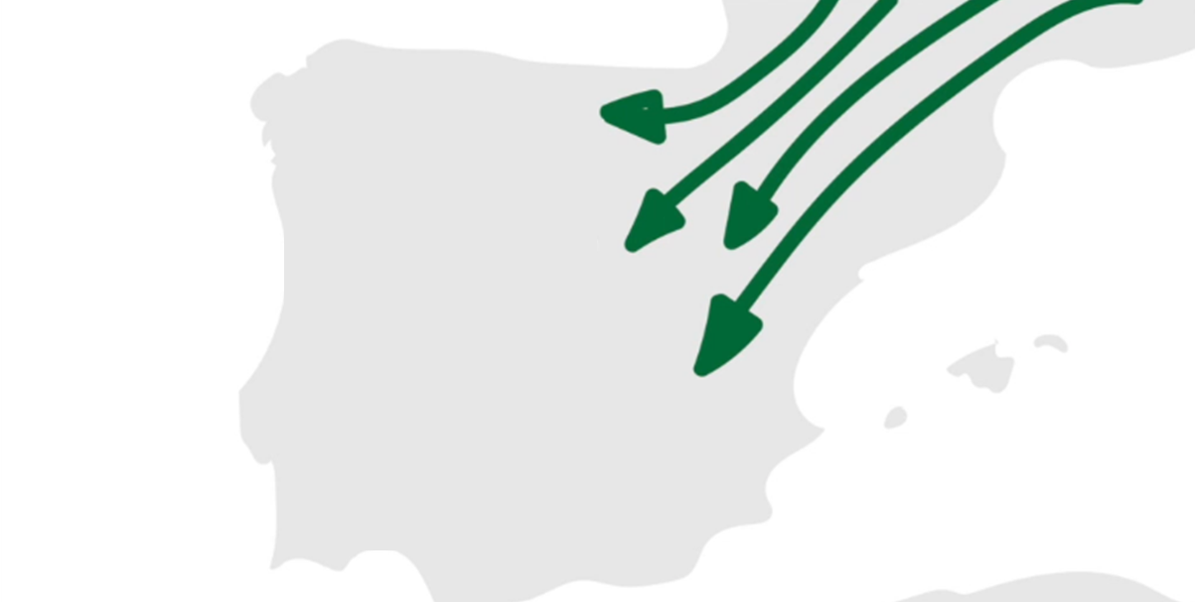
Domingo Carlos Salazar, Ikerbasque researcher at the UPV/EHU, has participated in a DNA study that reviews 8,000 years of history of the Iberian Peninsula. The results show an unknown image about the transformation of the Iberian population throughout the different historical and prehistoric stages.
The research, published in the prestigious journal Science, has analyzed the genomes of 271 inhabitants of the Peninsula from different historical periods and has contrasted them with data collected in previous studies of another 1,107 ancient individuals and 2,862 modern ones.
The study confirms that the genome of the inhabitants of the Iberian Peninsula is the result of "a superposition of layers produced over thousands of years by different migrations, some of them relatively recent such as that of the Romans or Muslims," explains the researcher of CSIC Carles Lalueza-Fox, from the Institute of Evolutionary Biology. However, one of the most surprising and unprecedented conclusions of the study refers to the arrival of descent groups of pastoralists from the steppes of Eastern Europe between 2,000 and 2,500 BC, which meant the replacement of 40% of the local population and of almost 100% of men.
"The genetic results are very clear in this aspect. Progressively during a stage that could last about 500 years, the lineages of the Y (paternal) chromosome present until then in Iberia during the Copper Age were almost completely replaced by a lineage, R1b-M262, of steppe descent" explains Lalueza-Fox. "We do not know how it happened, but clearly they replaced the Iberian paternal lineages for a paternal lineage of steppe origin, which even today is still the most common in the Iberian Peninsula" says Lalueza-Fox.
"This replacement could be due to a violent situation, similar to a large-scale confrontation or genocide, but in the archaeological record there is no evidence of such violence. Another possibility could be that, due to a strong social stratification, local women preferred men from foreign clans and that they had more reproductive success than local ones, but the genetic data alone will never reveal the full story", insists Iñigo Olalde from Harvard University.
The study also reveals that in the Neolithic there was another genetic replacement in the Iberian population triggered by the arrival of farmers from Anatolia (now Turkey), which replaced the culture of hunter-gatherers of the end of the Mesolithic (from the year 8,000 to C. to 5,500 BC) as well as exceptional cases that show that there was an interaction with North Africa. These are cases that show that there were sporadic and early contacts between populations and, above all, they are "incredible and anonymous individual stories of people who we will never know who they were or what they did but who had an exceptional life trajectory for the time", underlines Lalueza-Fox . Similarly, in a Visigothic site, in Girona, "two individuals with ancestrality from the far east of Europe and with an Asian mitochondrial DNA" were found, and in Ampurias other individuals with Greek ancestry, all with an " incredible vital trajectory", taking into account that they or their closest relatives were born in the VI and VII centuries in points very far from the Peninsula, where they were buried.
Another of the main conclusions of the study is that the genetics of the current Basques has barely changed since the Iron Age (about 3,000 years ago). Contrary to what some theories suggest that placed the Basques as the descendants of Mesolithic hunters or of the first farmers who lived in the Iberian Peninsula, the results show that the genetic influence of the steppes also reached the Basque Country (in fact they have one of the highest frequencies of Y chromosome R1b). On the other hand, they are hardly influenced by later migrations such as the Romans, the Greeks or the Muslims, from which they were isolated.
For further information: http://science.sciencemag.org/content/363/6432/1230
.png)
